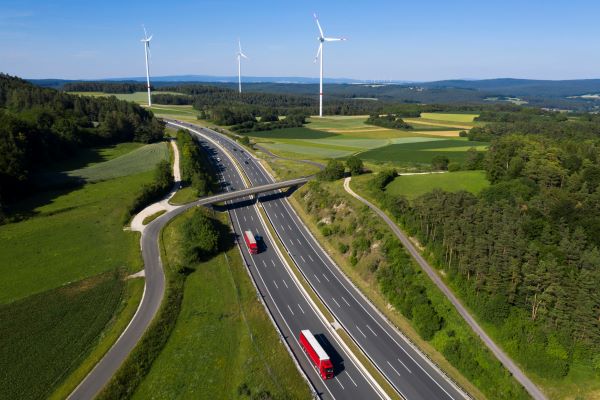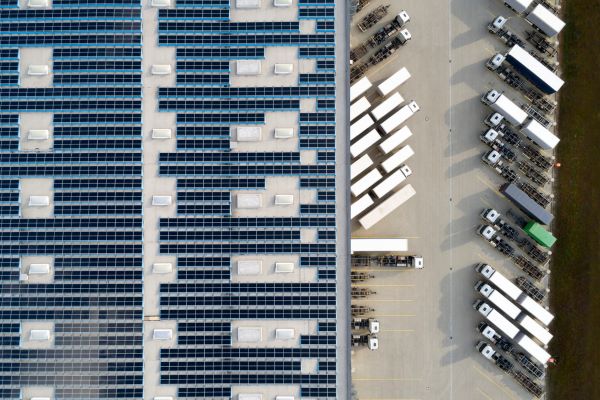The U.K.’s Global Tariff: A new broom sweeps green?
In liberalizing the trade of dozens of environmental goods, the U.K. signals its commitment to tackling climate change. But is this enough?
The new U.K. Global Tariff will liberalize trade in dozens of environmental goods. It's a great start, but should it go further?
The United Kingdom’s (U.K.) departure from the European Union (EU) at the end of January presented its government with a number of choices about how it would operate outside the Single Market and Customs Union. Chief among these choices was the countries’ new external tariff regime, released May 19. This schedule determines which imported products will face duties, and how high those duties will be.
Applying from the end of the transition period (currently December 2020), this new regime will replace the EU’s Common External Tariff (EU CET) and shape the competitiveness of thousands of foreign and domestic goods, including hundreds of goods of critical importance to sustainability and the greening of the economy. Ensuring such goods and components can be imported tariff-free increases their competitiveness, encourages uptake by consumers and businesses, and helps level the playing field between investments in low-carbon energy sources and fossil fuels on which tariffs are uniformly zero-rated. (Eliminating tax preferences favouring fossil fuels would help also.)

What's different about the new U.K. Global Tariff?
Assessing the new U.K. Global Tariff (UKGT) against the EU CET is complicated by the absence of consensus on what constitutes an “environmental good.” While some products like solar panels or wind turbines are uncontroversial, others—especially goods with both environmental and non-environmental uses, such as acrylic polymers or superheated water boilers—are more contestable.
One benchmark is the list produced by the co-chairs of the plurilateral Environmental Goods Agreement (EGA) negotiations. This list built on the 54 products itemized in the earlier Environmental Goods initiative of the Asia-Pacific Economic Cooperation (APEC), bringing the total to 265 tariff lines. As part of the British government’s consultations on the UKGT, a group of trade experts, business groups, and civil society organizations formally recommended liberalizing the roughly three quarters of the EGA product list that faces tariffs under the EU CET.
The UKGT did not quite meet that challenge in full, but still made meaningful progress over the EU CET in liberalizing EGA-list products. The UKGT:
- Maintains existing tariff-free access for all 67 products from the EGA list that were already zero-rated under the EU CET; this category includes products such as photovoltaic cells and modules; machines and apparatus for the manufacture of boules or wafers (which are used in the manufacture of photovoltaic wafers); light-emitting diodes (LEDs); and various instruments and apparatus for measuring or checking the flow, level, or pressure of liquids or gases.
- Removes tariffs on an additional 133 product categories listed in the EGA list and their sub-categories; tariffs on most of these products under the EU CET range between 1.5% and 4%.
- Reduces tariffs on another 57 product categories, albeit generally by 1 percentage point or less as part of a rounding exercise.
- Ultimately leaves only five EU CET tariff lines from the EGA list at their previous levels.
Notably not lowered were tariffs on electric or hybrid-electric passenger vehicles, which remain at 10%, nor on bicycles, which remain at 14%. The complete set of tariff changes can be found here and those corresponding to the EGA list here.

Meaningful changes
Among the environmental goods on which tariffs won’t apply at the end of the U.K.’s Brexit transition period are the following lines covering equipment used to generate heat or electric power from renewable energy sources.
|
Four or six-digit tariff line (HS 2017) |
Description |
|
7007.19 |
Toughened (tempered) safety glass — Other, which covers solar glass used in photovoltaic panels. |
|
7009.91 |
Glass mirrors, unframed, which covers solar concentrating mirrors with one or more float glass layers, designed for use with photovoltaic (solar) generators. |
|
84.10 |
Hydraulic turbines and water wheels, and parts of hydraulic turbines and water wheels. |
|
8419.19 |
Instantaneous or storage water heaters, non-electric, which covers solar water heaters. |
|
8483.40 |
Gears and gearing, […] of a kind used in wind turbines and dual-axis slewing drives designed solely or principally for solar concentrator systems. |
|
8501 |
AC generator “alternators,” which covers AC generators for wind-powered generating sets. |
|
8502.31 |
Generating sets, wind-powered. |
|
9013.80 |
Liquid crystal devices […]; lasers […]; other optical appliances and instruments, not specified or included elsewhere in this chapter — Other devices, appliances and instruments, which covers solar heliostats. |
Other environmental goods on which tariffs will be set to zero include thermostats, glass wool insulation products, fluorescent lamps, LED lamps, waterless urinals, composting toilets, and heat pumps.
A start, but what next?
The products liberalized are a subset of the EGA list, which in turn represents only a portion of all goods that can reasonably be considered environmental. However, it is highly likely that we will continue to see many new environmental technologies invented. Once they are, how will they be dealt with in the U.K.’s tariff schedule? It’s reasonable to expect that, in time, the government will review and update its tariff settings as technologies evolve, market realities shift, and new versions of the Harmonized Commodity Description and Coding System (HS) are designed and implemented.
Wider implications
Beyond the domestic benefits of lowering tariffs on so many goods important for environmental sustainability, it’s hoped that the U.K.’s unilateral liberalization could eventually encourage a restart to the EGA negotiations at the World Trade Organization.
As convener of the 26th session of the Conference of the Parties of the United Nations Framework Convention on Climate Change (COP 26) in Glasgow (November 1–12, 2021), the U.K. will have the opportunity to highlight the importance of expanding the number of countries liberalizing their trade in environmental goods.
As the convener of COP 26, the U.K. will have the opportunity to highlight the importance of expanding the number of countries liberalizing their trade in environmental goods.
That the U.K. has offered these reduced tariffs on a most-favoured-nation basis—i.e., accessible to all World Trade Organization members equally—bolsters the approach taken by the six countries currently negotiating an Agreement on Climate Change, Trade and Sustainability (ACCTS), of which the elimination of tariffs on an agreed list of environmental goods will form a part.
By COP 26, the initial parties to the ACCTS negotiations are likely to have concluded an agreement and will have opened it to new adherents. Announcing the U.K.’s intention to join ACCTS at that event would send a signal of its commitment to multilateral progress on trade, the environment, and climate change.
Dmitry Grozoubinski is the founder of ExplainTrade and a Visiting Professor at the University of Strathclyde. George Riddell is Director of Trade Strategy at EY UK&I. Ronald P. Steenblik is a Senior Fellow at the International Institute for Sustainable Development.
You might also be interested in
Global Dialogue on Border Carbon Adjustments
This report contributes to the global BCA discussion by summarizing country-level reports reflecting dialogues conducted in Brazil, Canada, Trinidad and Tobago, the United Kingdom, and Vietnam.
Britain Becomes First European Member of Trans-Pacific Trade Bloc
The United Kingdom becomes the first new member to join the Comprehensive and Progressive Agreement for Trans-Pacific Partnership (CPTPP) since it entered into force in 2018.
The CPTPP trade deal is a major threat to public health and warrants a health impact assessment
The UK government has joined one of the world’s largest free trade agreements, known as the Comprehensive and Progressive Agreement on Trans-Pacific Partnership (CPTPP). The CPTPP is not a new trade agreement waiting to be negotiated, but an already active one among 11 Pacific Rim countries (Australia, Brunei, Canada, Chile, Japan, Malaysia, Mexico, New Zealand, Peru, Singapore, and Vietnam). Joining the CPTPP commits the UK to several rules concerning trade in goods and services that have important implications for health. Although the US is not a member of the CPTPP, the agreement evolved from the Trans-Pacific Partnership, which initially included—and was shaped by—the US before President Trump withdrew the country from the deal in 2017. As such, many provisions, and even entire chapters, of the CPTPP are near carbon copies of other free trade deals negotiated by the US. But despite how much alarm was raised over the potential health effects of a free trade agreement with the US, there has been little discussion of the public health implications of the UK’s accession to this new deal.
Agreement on Climate Change, Trade and Sustainability: A landmark pact for trade and sustainability
The ACCTS pact, signed by Costa Rica, Iceland, New Zealand, and Switzerland, aligns trade and environmental policies, tackling fossil fuel subsidies, eco-labels, and green trade.
